THE BED
In 2006 we have find the traces of the stair posts; one, thicker and deeper was to the center of room and goes down through the floor. The second, to the wall was catch in the floor plaster; he seems shorter, but also goes under the floor (fig. 39-40).
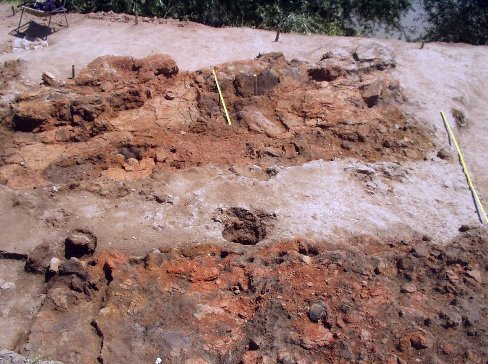
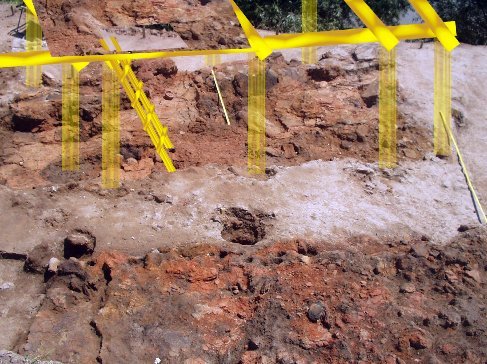
Fig. 39 a) Stair holes; b) stair poles holes and the bed edge
The pit with «clay sling balls» supposes that stair and storey were built in the same moment. The pole to the interior of the dwelling must be fixed in the ground, he supports the pressure of climbing; the other, to the wall was used to fix the horizontal stairs steps (these can be fixed in the W wall too, if had the right structure, as the N wall). We do not know the structure of the W wall; being an interior wall was not necessary to be covered with clay.
In 2005 under the stair we have observed grouped clay sling balls. Access to this area is marked by an orifice covered with a clay lid. Under the bed we have find only one big posthole. We do not empted it, so we do not know how many poles have been inside it; many times such postholes contain three-four poles. After the impressions of the inner structure of the bed maybe the oblique beams have been put; on top of them follow the poles.
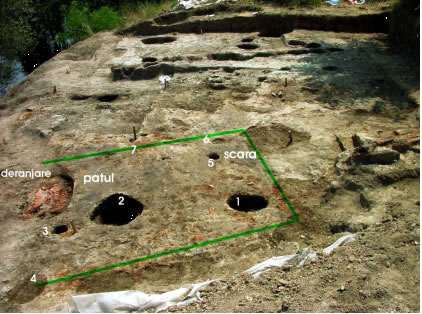
Fig. 40. Posthole under the stair
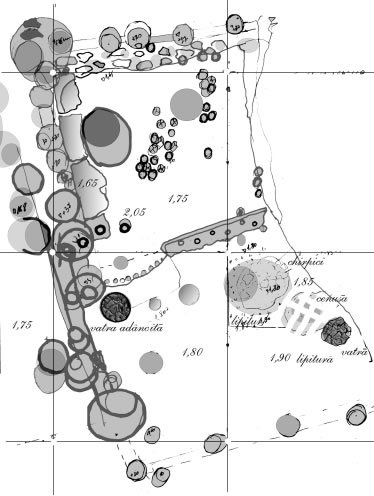
The bed has a round pole structures (6-9 cm thick); poles were one to another on the wide side (shorter, so being more resistant). Posthole 2 was used for the resistance posts or for a cut log; this did not pass through the structure as posts 1. This post belongs to the stair and posts 3, 4, 6, 7 to the marginal walls, or used to sustain the oblique beams.
Poles from the interior structure have been tied with rods, lianas (until 1,5 cm), as we have find in the central area (fig. 41a-b reconstruction). Such tied we have noticed at the wall with the Moon at Temple/Sanctuary 2 in the center of the site (Lazarovici Gh. et alii 2001, I.2, pl. 93/7).
The pole structure consist of two thicker ones, followed by others four-five thinner (fig. 41c).
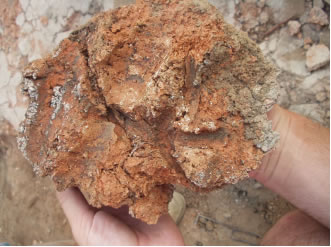
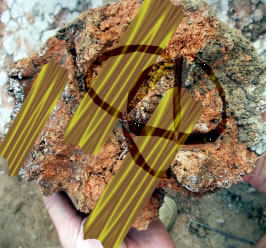
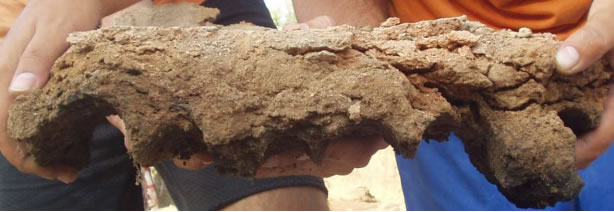
Fig. 41. The bed, a-b) structures of the bed with traces of rods or lianas;
c) profile through the plaster floor
The bed (2,2 x 2,6 m) was near the N wall. Under it in 2005 we have discovered 30 clay sling balls. On the S wall the bed has a light frame with pole (5cm thick) structure, plastered with clay, maybe related with a 50 cm high dividing wall also plastered with clay. It is possible that the upper part of this wall consist only in a rod structure. The poles have been fixed on the structure of the W wall. Only here it was possible to reconstruct the structure; for the N wall we can not specify the high, but we believe was similar.
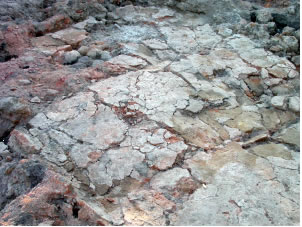
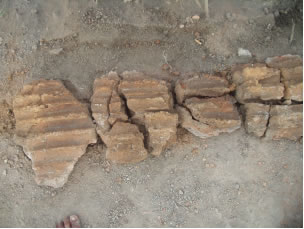
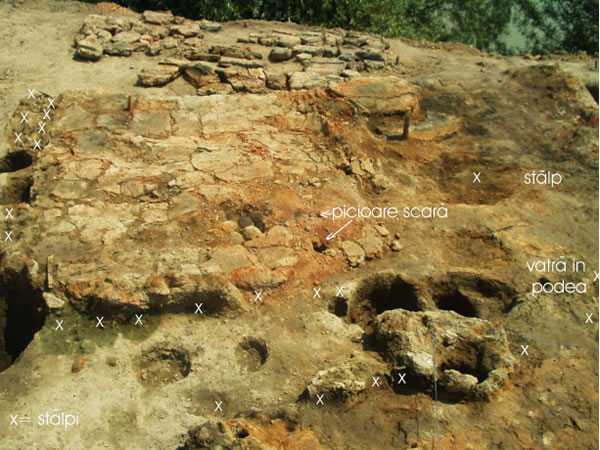
Fig. 42. The bed: a) plastering strata; b) inferior structure;
c) general view
The W lateral wall of the room in the stair area consist of horizontal poles, covered by clay, similar to the floor structure (but here vertical posts have been to about 20 cm distance one from another). The structure of the wall was put on the limit of the bed after a period of use, because the bed edge was rounded here (fig. 39b, 43c, especially 44).
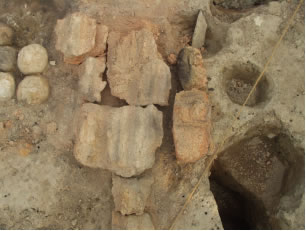
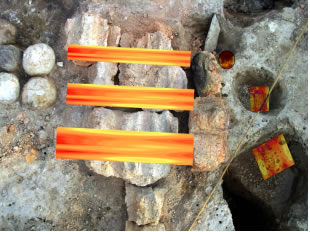
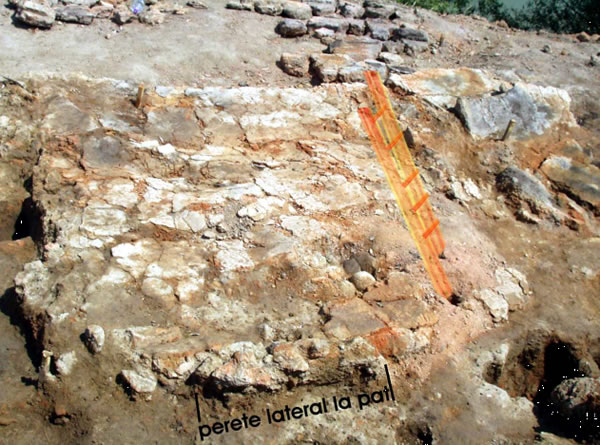
Fig. 43. Lateral wall (V) of the bed: a) structure, b) reconstruction; c) location
The South edge. Other structure, light and not too high has the wall between rooms N and S near the bed limit. This wall needs a structure to be support. In this case the structure was represented by the posts from the middle of the storey between the two rooms and a row of longitudinal beams, thicker from the bed edge.
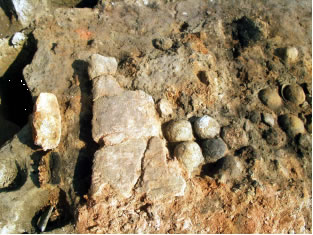
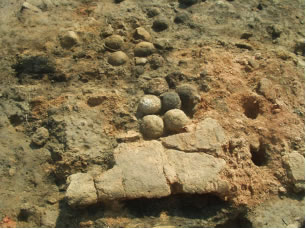
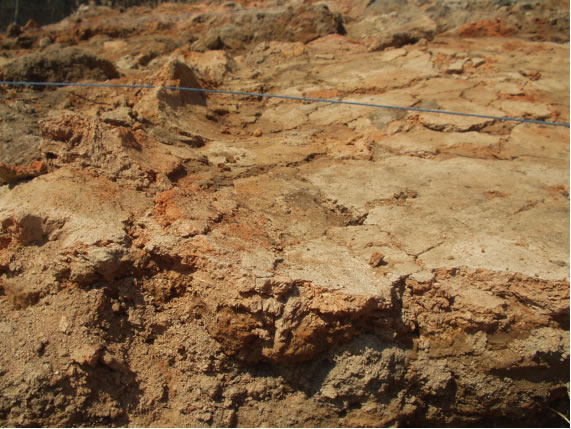
Fig. 44 a-b)Bed floor, first stage, without repairs; c) the E wall of the bed
The structure of the S edge consists of thrusting vertically poles and rod horizontally interweaved, plastered with clay, weak fired. Only the base of the wall was preserved. Because of several clay plasters of the floor the edge become thicker. When bed fires and falls down, this wall was higher as the floor, while the structure goes on the bed edge until the floor of the S room.
From place to place adobes fragments seem to be special arrange in the area of the dividing wall; some adobes present a round impression, from a vertical, thicker post (fig. 45).
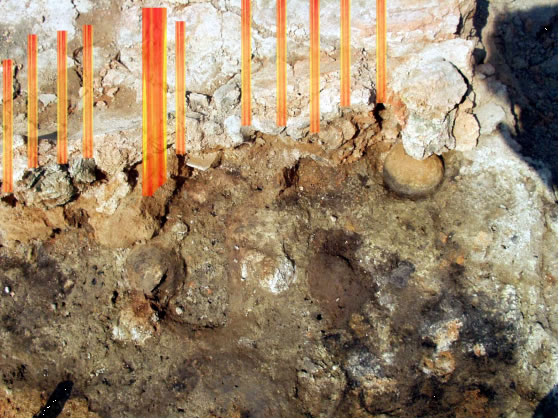
Fig. 45. The S margin of the bed, reconstruction of the structure
Some adobe fragments have traces of poles of 4-6 cm thick, mark the edge of the bed. The dividing wall was destroying prior fired strongly, when falls dawn the storey of the S room.
The inferior structure of the bed. In some parts we have discovered beam traces put on the long side of the bed, the transversal ones on the shorter side. The longest (E-W orientated) have to the middle a log or short poles, cut, on which were other poles N-S oriented. The poles have over 2,2 m long, as the bed wide was. We investigate in detail the floor to establish the building technologies. Poles have been arranged on their long side. Some of them being crooked, in the space between small rods have been added to preserve the clay (fig. 46/1). When poles are thinner clay flow until the beam and the pole was entirely covered by clay (fig. 46/2).
For the entire structure of the bed we have to note the uniformity. Only in the main area we have find some bigger clay fragments, weak fired. Under the bed we have observed areas where the beams do not fired (air was missing) and just carbonized; wide of some of transversal beams can be seen in fig.**; from others situated on the head of the bed we have find their impressions (fig. 46c).
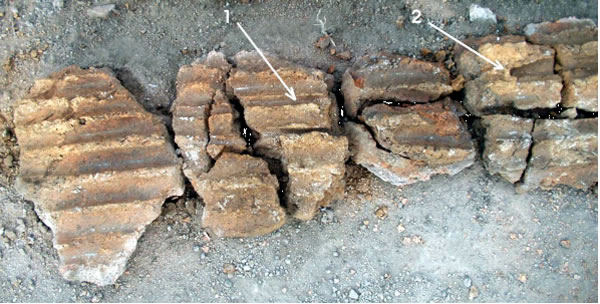
Fig. 46: a)1, rod between stake; 2, clay plaster between beam and pole
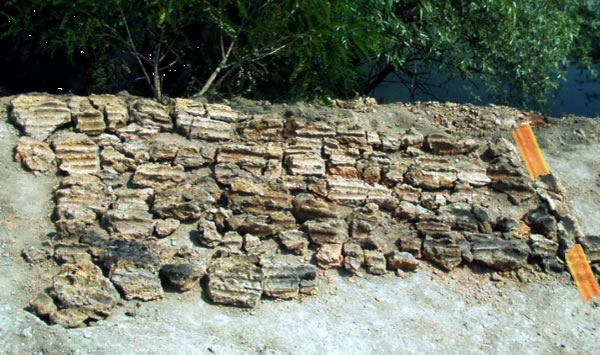
Fig. 46: b) all the structure
Sometimes beams still keep traces of soot, proving that it was a stifling fire; under the floor traces of fire, prove that baking takes place after the storey fall dawn, in the areas where air comes.
On the entire structure we have observed a succession of thick poles, followed by other five-six thinner ones. Under the bed there were clay sling ball not entirely fired, fired or covered with soot. After we take out some ruins, on the S edge we have observed a big beam (fig. 46c). Generally transversal beams are not preserved. One transversal beam, from the middle of the bed, so traces have been found in adobes and on ground. In this case the fire took place when the structure was entire. Transversal poles did not entirely burn. We have discovered their carbonized traces and their structure. The discovered polls have been taken out for study and radiocarbon analysis.
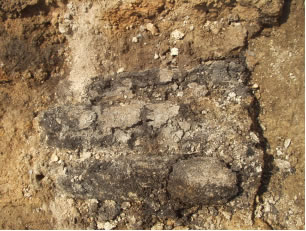
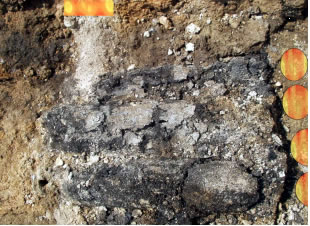
Fig. 47 Carbonized take structure





















